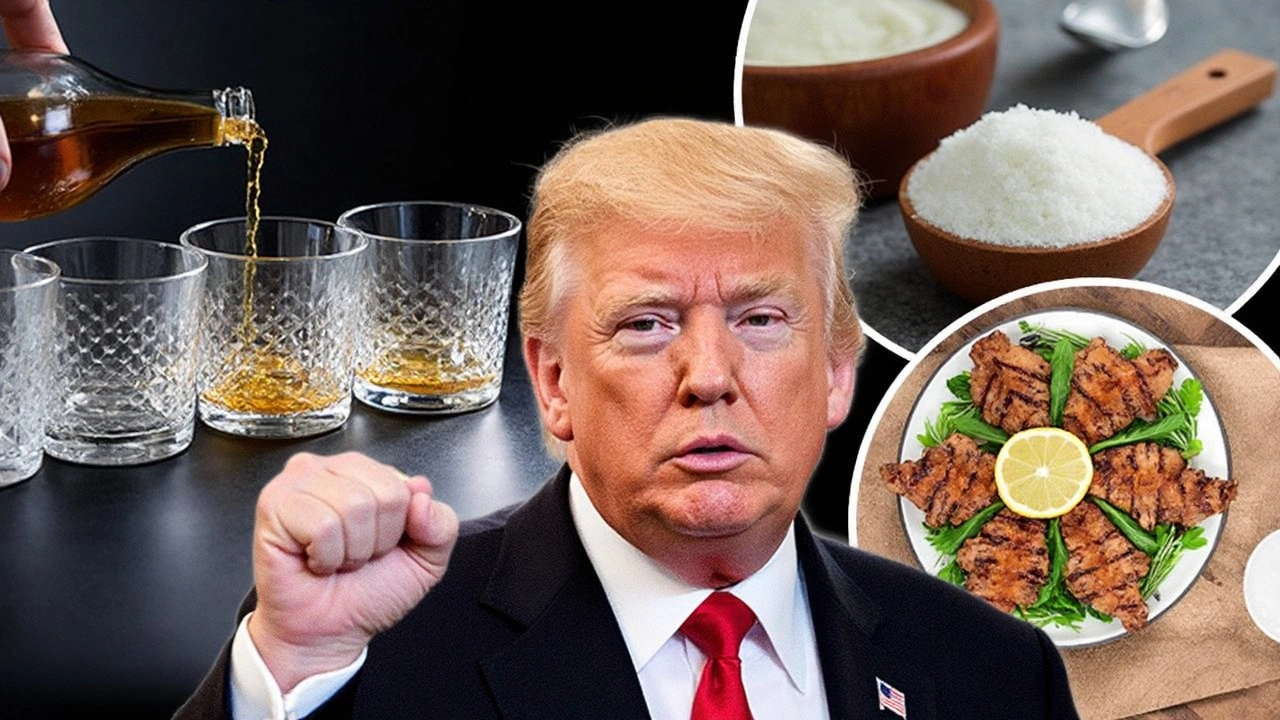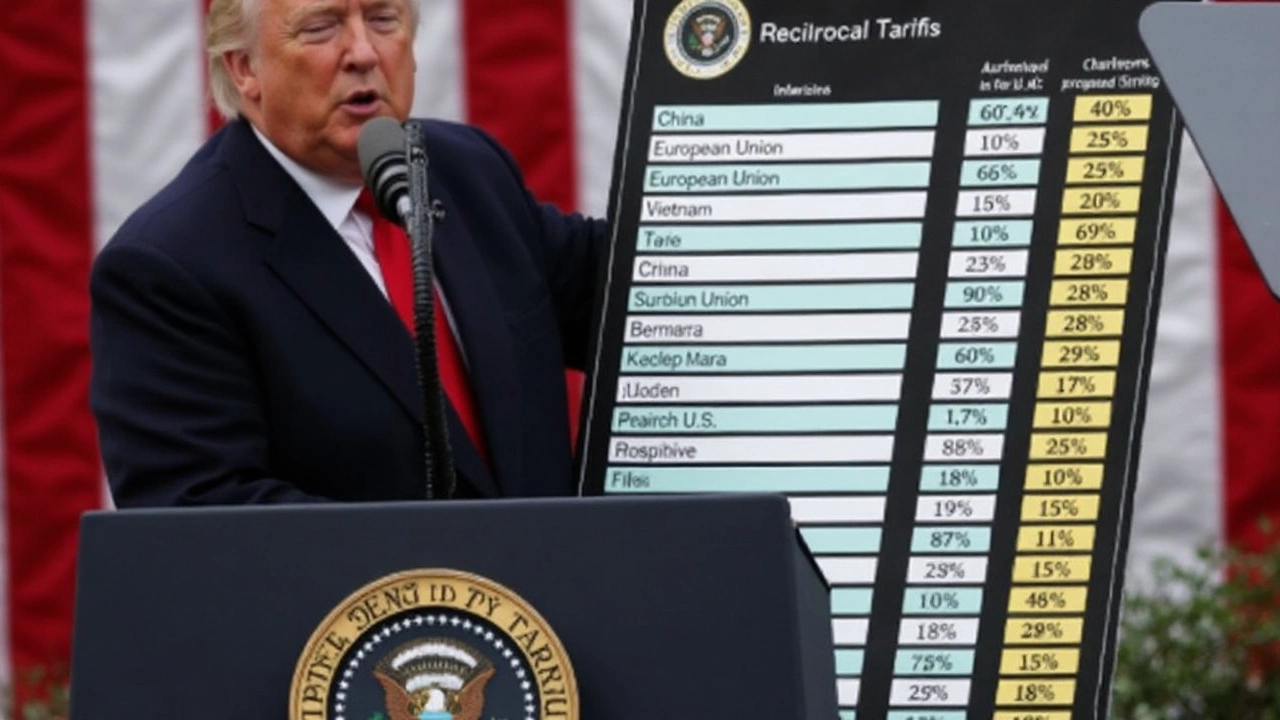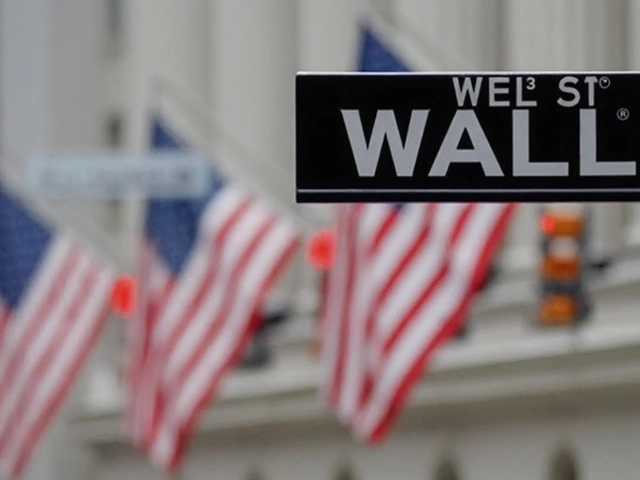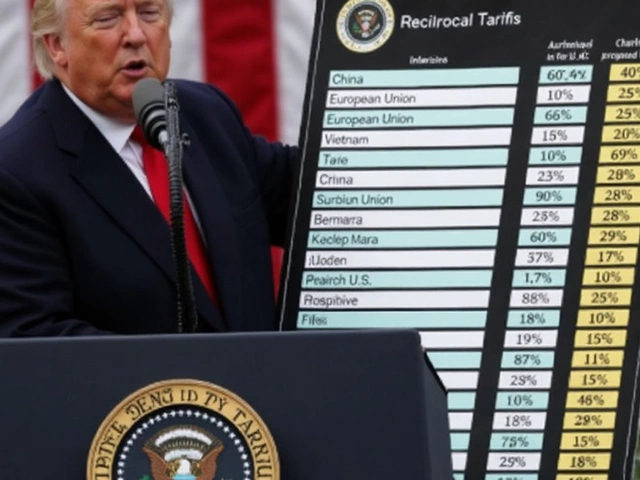In a bold move suggesting a new chapter in global trade dynamics, President Donald Trump has ramped up U.S. trade policies by unveiling a series of sweeping tariffs. These measures, effective from April 5, 2025, introduce a 10% universal import duty, while 60 countries face even steeper rates from April 9. The move marks an aggressive stance aimed at perceived injustices in international trade and seeks to reinforce America's economic sovereignty.
Key Targets and Sectors
The U.S. has strategically targeted major economic zones, effectively transforming existing tariffs into significant hurdles for foreign exporters. Notably, China is now bracing for a hefty 54% tariff—an amalgamation of prior duties and the newly enforced rates. Meanwhile, the European Union, along with long-standing trade partners like Canada and Mexico, responds with countermeasures of their own, cementing an attitude of defiance. Nations such as Japan and Brazil have voiced criticisms yet refrain from immediate retaliation.
The tariffs don't stop there, as they extend into North America, where Canadian and Mexican goods not aligned with the U.S.-Mexico-Canada Agreement (USMCA) standards encounter a 25% tariff, alongside a 10% penalty on Canadian energy imports. These moves tie into broader policy goals of curtailing drug trafficking and immigration efforts, positioning this decision as multifaceted.
Specific sectors bear the brunt of these measures, as steel, aluminum, automotive, and energy imports face targeted tariffs. The administration's motivations include a boost to domestic production and closing loopholes that have historically benefited powers like China. Interestingly, certain exemptions apply to critical minerals and specific energy resources, indicating a nuanced approach to safeguarding key industries.

Economic and Diplomatic Fallout
Trump's tariffs evoke mixed responses. Supporters view them as necessary corrections to long-standing trade deficits, whereas critics highlight the potential fallout on U.S. industries dependent on imported materials—car manufacturers and construction sectors, for instance. Projections pin an average $1,072 added cost for American households, stirring debates on the economic sustainability of these decisions.
Retaliatory tariffs from global peers like Canada, China, and the EU potentially lay the groundwork for an escalating trade conflict. This adversarial climate threatens the fabric of North American supply chains, a concern that economic analysts from Brookings emphasize might ultimately empower China by weakening trade cohesion.
The backdrop of this tariff saga is the invocation of the International Emergency Economic Powers Act (IEEPA), which Trump leverages to frame these measures as countermeasures to national security threats, including concerns around intellectual property and counterfeit products.
President Trump's narrative pitches the tariffs as a stand against "non-reciprocal" trade practices, framing the actions as a route to equity in international trade. Declaring April 2 as “Liberation Day” symbolizes this new era, beckoning a comparison to the historic Smoot-Hawley Tariff Act of 1930—a period similarly marked by protectionism.






